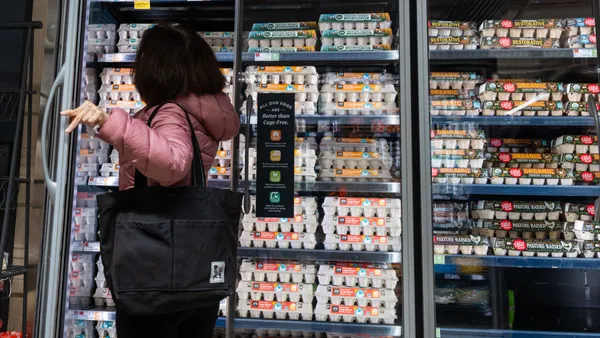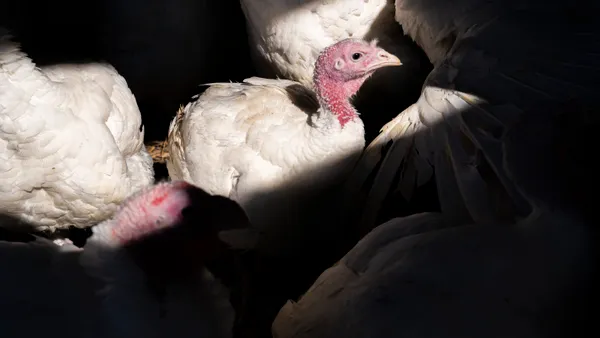Dive Brief:
- Tyson Foods missed Wall Street expectations in its latest quarter and reported its first loss since 2009 amid broad challenges in the meat and poultry space. CEO Donnie King said the period was uniquely difficult for the company. “I can’t remember a time when our business faced the highly unusual situation where beef, pork and chicken were all experiencing challenges at the same time,” he said on the earnings call.
- The meat and poultry giant lowered its fiscal year sales outlook from $55 billion and $57 billion to between $53 billion and $54 billion. The majority of the 80% yearly decline in the company’s adjusted operating income was driven by lower sales of beef and chicken, as material costs and labor have weighed on the businesses, John R. Tyson, the company’s CFO, said on the call.
- Tyson’s dismal quarter follows a series of recent moves aimed at boosting efficiency, including laying off 10% of corporate employees and closing processing facilities in Virginia and Arkansas.
Dive Insight:
Tyson’s disappointing earnings report provides fresh evidence that supply and demand volatility continues to impact the bottom line of the nation’s largest meat and poultry processor. Since last summer, Tyson has put in place an aggressive strategy — including greater reliance on automation and efforts to retain labor — in an effort to curtail spending and modernize its operations.
Shares of Tyson fell roughly 16% on Monday following the earnings report after it posted a loss and cut its sales forecast. The decline continued Tuesday with its stock down another 4% in early trading.
In a report shared with investors last week, JP Morgan analyst Ken Goldman said some of the problems Tyson is facing could continue to cause issues for the foreseeable future.
“The beef segment may suffer over the next few years from lower cattle supply, and plenty of uncertainty remains overall,” Goldman said.
Tyson executives warned on the earnings call the headwinds the company has faced will more than likely continue for the remainder of 2023.
CFO Tyson said cattle costs increased by roughly $305 million in the quarter because of tight supply. In pork, low demand resulted in a 9.2% decrease in sales despite an increase in hog availability, he said.
Tyson’s chicken operations faced a $166 million loss in operating income, which the company attributed to the bird flu outbreak last year and feed costs increasing by $145 million, the CFO said.
“Although the current operating environment has proven to be difficult, we view this as an opportunity to grow and improve our business operations, and we are optimistic on our long-term value driver prospects,” Tyson said.
Tyson has aimed to improve its business by reshaping its workforce and tackling its supply issues. Last week, the meat giant announced the completion of an $83 million expansion of its Claryville, Kentucky plant dedicated to producing Hillshire Farm products. In March, Tyson also announced a $70 million investment in a new hatchery in Hope, Arkansas, which it said will triple capacity and improve efficiency at its poultry plants in the state.












